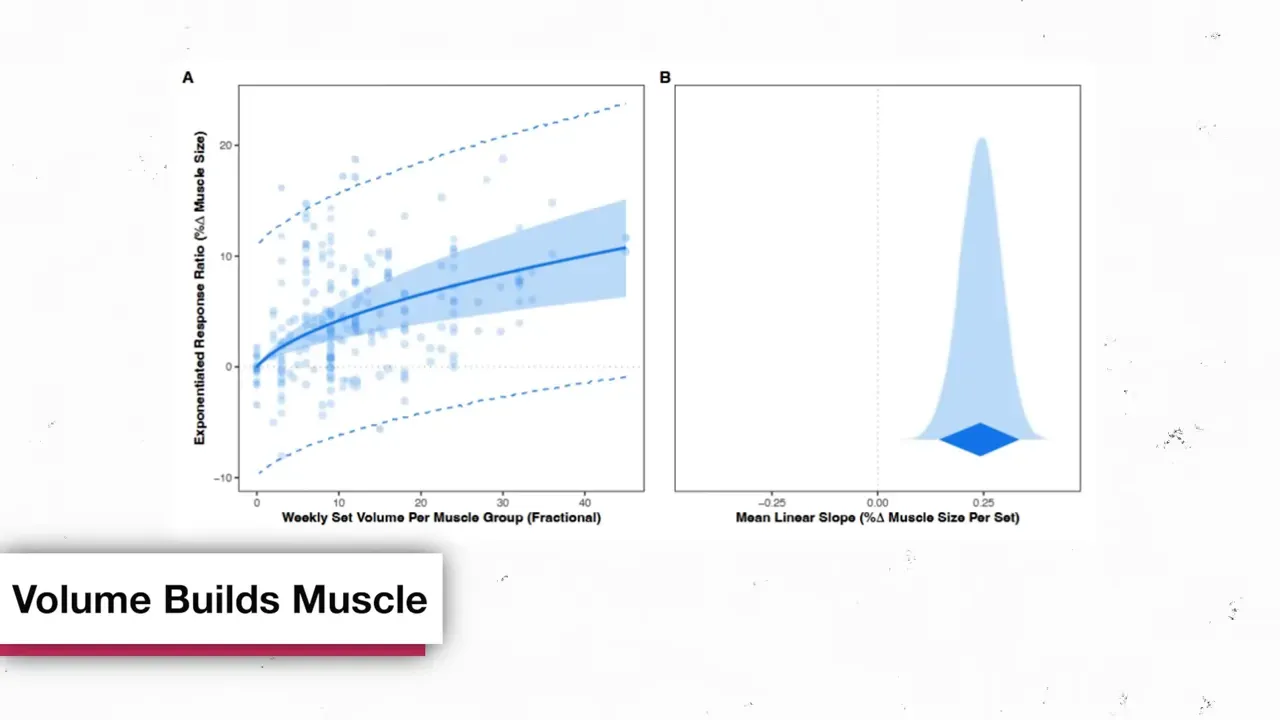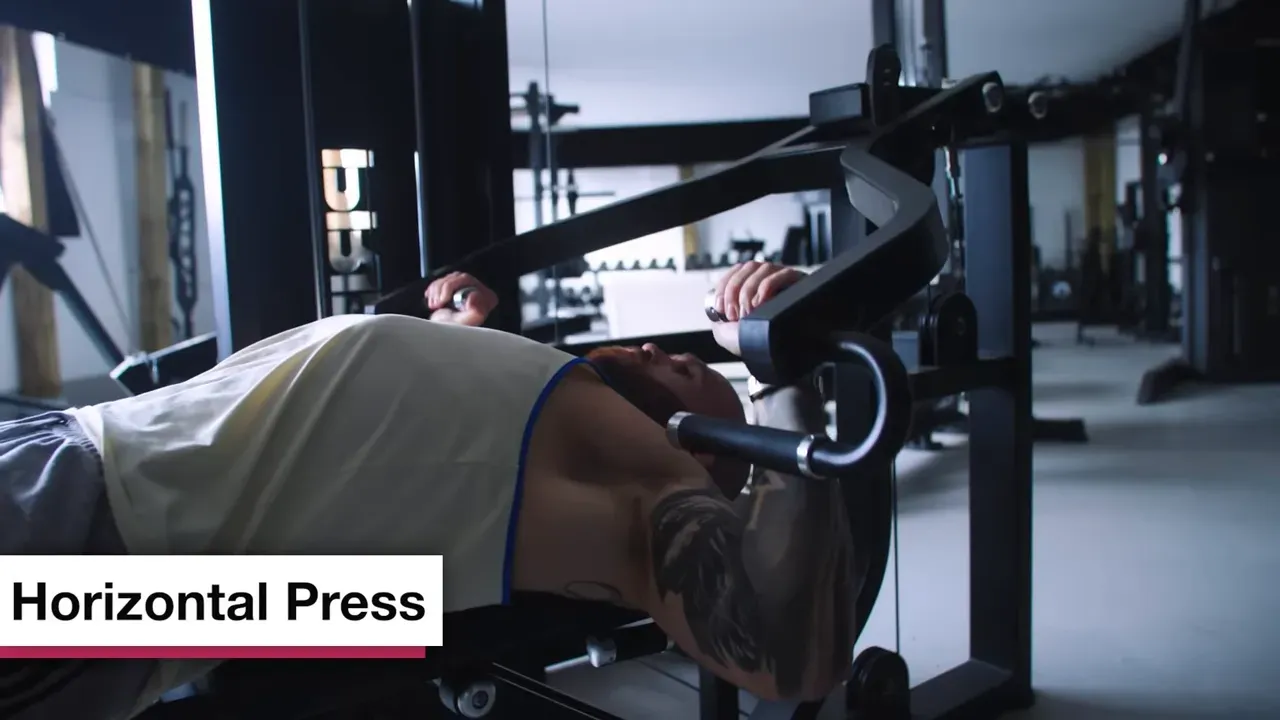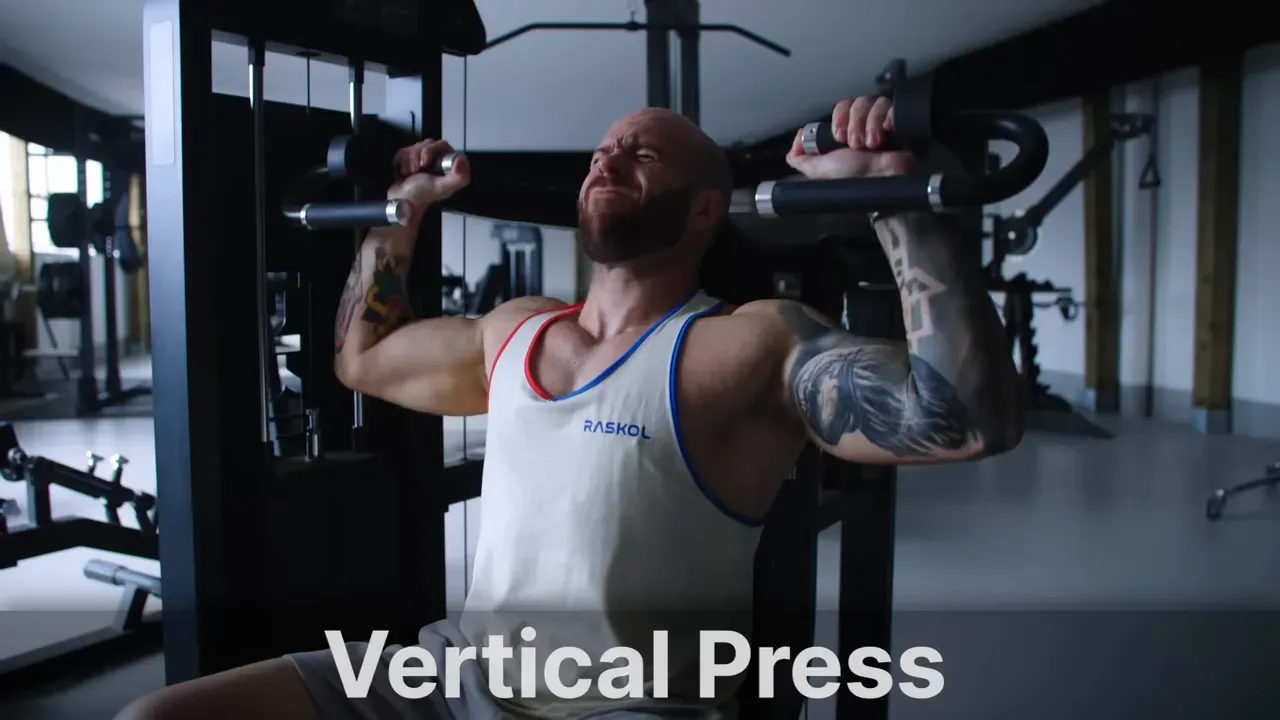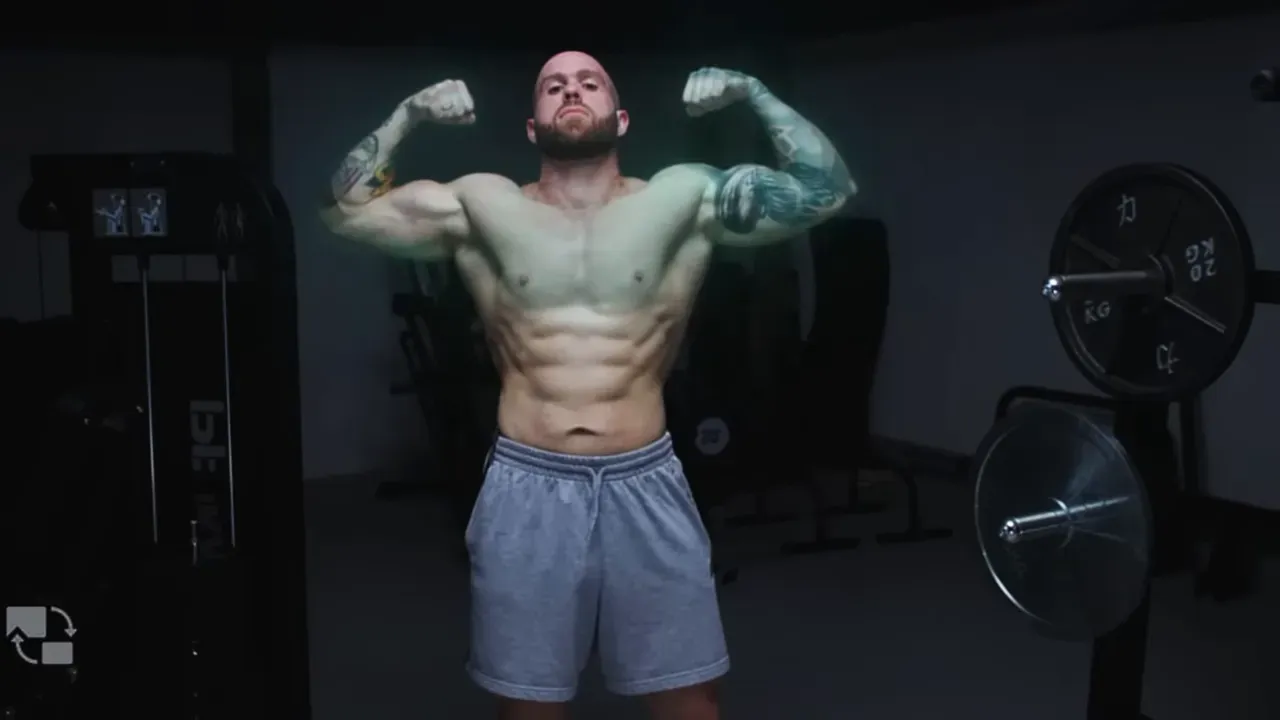The Minimum Effective Dose: More Muscle in Less Time
Expert guide that helps you get bigger, leaner, and stronger with 10–60 minutes of lifting per week

Key takeaways
- You can build meaningful muscle with roughly four sets per muscle group per week.
- If you’re time-poor, train close to failure and favor 5–12 reps for best results.
- Use supersets and drop sets to cut session time by 30–40% while keeping results high.
Want to save hours and still make real muscle and strength gains?
In this expert review, we analyze, critique, and expand on Dr. Pak's practical, science-based approach to the minimum effective dose for muscle and strength.
What makes this review different and why should you listen to us?
- Our experts have carefully reviewed and fact-checked this post based on their extensive experience publishing 300+ articles.
- We include little-known tips to squeeze more progress from minimal training time.
- An expert workout inspired by the minimum effective dose and approved by our in-house exercise scientist with 20+ years' experience in the gym.
Continue reading for a complete breakdown, a plug-and-play minimalist program, and evidence-based coaching tips you can use today.
Related:
In a Nutshell: Minimum Effective Dose Training
You can make meaningful strength and muscle gains with a small, focused training dose. Strength sometimes needs as little as a single heavy set per week. For hypertrophy, aim for roughly four sets per muscle group per week, done close to failure. Keep workouts short, pick the right movements, and use time-saving techniques like supersets and drop sets.
Your training must be intense and smart. Train hard on the few sets you do. Use 5–12 reps and go near failure to get the most from minimal volume. Rest, exercise choice, and progression still matter.
Stick with this approach and you’ll keep getting better without spending all your spare time in the gym. That’s the big win: more muscle, less time, improved physique.
Key concepts
- Minimum Effective Dose (MED): The smallest amount of training that produces a meaningful gain.
- Effective Volume: Four sets per muscle group per week is a practical target for hypertrophy.
- Intensity of Effort: Training close to failure matters more when volume is low.
Why a little training can go a long way
Start with the core idea
The minimum effective dose is not a trick. It’s a principle. You do the least work needed to make real progress. You accept that you might not extract every last ounce of potential. But you get most of the gains with far less time and hassle.
Strength vs hypertrophy: different rules
Strength and size overlap, but they respond differently to volume.
Strength gains are shockingly volume-efficient. Studies show trained lifters can improve strength with very low weekly sets. One meta-analysis found that one single set per week can still produce meaningful strength gains. Strength often tops out around four sets per week.
Muscle growth is less forgiving. The simple rule: more is more. But "more" has a practical floor. For real hypertrophy in trained trainees, around four sets per muscle per week gives solid results. That’s the practical sweet spot for busy people.

Why minimal dose still builds muscle
Two things matter most: effort and effective reps. If you do a few hard sets and take them close to failure, you create a powerful stimulus for growth. You still trigger motor unit recruitment, metabolic stress, and the signaling that drives hypertrophy.

Extra benefits: health and mental health
Small doses of resistance training deliver health returns. Five minutes per week helps you a little. About an hour a week may be enough to maximize reductions in all-cause mortality risk. And lifting helps mood and mental health even in low doses. So the argument to skip training falls apart quickly.

How to train when you only have minutes per week
Rule 1 — Train with intent
When volume drops, intensity must rise. That means you should take many sets close to failure. For the serious lifter, training to failure is more important at low volumes.
Evidence shows trained lifters who train to failure on low-volume programs make better gains than those who stop several reps shy. If you only get a handful of sets per week, make them count.
Rule 2 — Favor 5–12 reps
Stay mostly inside the 5–12 rep range. You can get hypertrophy across a wide rep range, but your ability to judge proximity to failure fades after 12 reps. Keep things simple and effective. For strength-focused sets use 1–5 reps with heavier loads and leave a couple of reps in reserve.
Rule 3 — Pick movements that cover functions
When you train little, exercise choice matters. You must cover major movement patterns so no muscle gets ignored. Here are the core movement patterns to target each week:
- Horizontal press — chest, front delts, triceps.
- Vertical press — overhead delts, triceps.
- Horizontal pull — upper back, lats, biceps.
- Vertical pull — lats, biceps.
- Squat pattern — quads, glutes, adductors, erectors.
- Hinge pattern — hamstrings, glutes, erectors.
- Lateral raise type — side delts.
- Leg curl and leg extension types — target hamstrings and quadriceps more specifically.
- Biceps and triceps isolation — optional but useful for detail work.

Minimalist vs freak lifter — who are they?
Two archetypes help you apply the idea.
- Uber Minimalist: Busy professional, family, little gym time. Wants visible muscle and strength without obsession.
- Freak Lifter: Obsessed with detail, but still limited for time. Wants near-optimal development with minimal weekly time.
What the Uber Minimalist does
Pick four movements the cover the big patterns. Example:
- Horizontal press (machine chest press or bench press) — 4 sets/week.
- Vertical pull (pull-ups or lat pulldown) — 4 sets/week.
- Squat pattern (leg press or squat) — 4 sets/week.
- Hinge (Romanian deadlift or trap bar deadlift) — 4 sets/week.
Do those sets in roughly 5–12 reps, take them close to failure, and you’ll build decent muscle and strength. Simple and fast. If you only want an upper body quick plan, four sets of chin-ups and four sets of dips per week done as supersets covers most upper-body growth.
What the Freak Lifter does
Cover all movement patterns, but keep per-muscle weekly sets at roughly 4–6 for main patterns. For accessory moves like leg extensions, leg curls, and direct arm work, target 2–4 sets per week.

This lets you chase more detail while keeping total time low. You can split across days or compress into a couple of full-body sessions.
Splits that work with minimal dose
- Upper-lower — split pushes/pulls on upper days, legs on lower days. Flexible and simple.
- Full-body — one session per week can be enough; two sessions are time-efficient.
- Push–pull–legs — better for home gym setups. Not ideal if you must drive 20 minutes for a 10-minute session.
- Freestyle — tick off movement patterns each week; okay if you train close to failure. Tracking PRs gets harder.
Save time in the gym: supersets, drop sets, and setup choices
Agonist–antagonist supersets
Pair opposing movements — e.g., horizontal press with horizontal pull. Do one set, rest 10–30 seconds, then do the paired set. Rest 1–2 minutes between supersets. This saves almost 40% of your gym time without costing gains.
Drop sets
Do one hard set to failure. Drop weight ~20% and continue immediately. Repeat 2–4 drops. Use on machines where you can adjust fast. Drop sets can cut session duration by 30–70% while offering a comparable stimulus.
Rest periods
Forget myths about super-long rests for growth. One to two minutes between sets is generally enough to maximize muscle growth. Resting less may slightly blunt growth but not catastrophically. If you need longer occasionally, take it — but prioritize training close to failure across your sets.
Equipment and setup efficiency
Choose exercises that require minimal setup. Stack-loaded machines and bodyweight moves are time-efficient. A loaded leg press beats a barbell squat if setup costs you time. But choose what you enjoy. If you love squats, do squats — enjoy the process and keep showing up.
Progression, warm-ups, and strength-specific advice
Progression without obsession
If you train very close to failure, progressive overload occurs naturally. Train hard and the weight or reps will creep up. You don’t need to force a rigid progression plan when volume is minimal — you need effort and consistency.
When to add dedicated strength work
If you want to get stronger on a specific lift, dedicate 1–4 heavy sets per week to that lift. Keep those heavy sets around 80%+ of your 1RM or use 1–5 rep sets with 2–4 RIR (reps in reserve). For strength, don’t chase failure every set — leave a bit in the tank on heavy singles and doubles.
Warm-ups — keep them short
Warm-ups shouldn’t steal your session. Recent evidence suggests skipping an elaborate warm-up won’t harm low-volume hypertrophy sessions. A light and one heavier warm-up set or two is often enough. If you have 30 minutes, don’t spend 10 of them on a long warm-up. Keep it practical.

Sample programs you can use today
Fast Hypertrophy: The "Four-Set Week" (Minimalist)
This program is based on the key insight: four effective sets per muscle group per week. It’s ideal if you have one or two short sessions weekly.
Program overview
- Ideal for: Busy professionals, time-poor lifters, people returning to training.
- Equipment needed: Bodyweight, one pull-up bar or lat machine, one pressing option (machine or dumbbells), leg press or barbell, a hinge option.
- Structure: Two full-body sessions per week or one longer session per week.
Workout (two sessions per week)
- Session A — Full body (Superset format)
- Horizontal press — 2 sets x 6–10 reps (to failure)
- Horizontal pull — 2 sets x 6–10 reps (to failure)
- Squat pattern — 2 sets x 8–12 reps (to failure)
- Hinge pattern — 2 sets x 6–10 reps (to failure)
- Session B — Full body (Superset format)
- Vertical press — 2 sets x 6–10 reps
- Vertical pull — 2 sets x 6–10 reps
- Leg curl or Romanian deadlift — 2 sets x 8–12 reps
- Lateral raise or side-delt work — 2 sets x 8–12 reps
Pro tips
- Superset opposing movements to save time (press/pull, quad/hamstring).
- Keep rests 10–30 seconds between paired exercises, 60–90 seconds between supersets.
- Train each set close to failure. If you can do more than the top rep range easily, add a bit of weight next time.
Notes on program execution
Take each set to or very near failure. Track total weekly sets per pattern to land around four effective sets. If you only have one session per week, do 4 sets for each main pattern in that session using supersets to keep time down.
Two short sessions per week are often better for recovery and consistency, but one focused session can work if you push hard and manage fatigue.
Want to automate workouts like this one and more? Put your progress on autopilot with Dr. Muscle AI.

"Freak Lifter Mini-Detail" Plan (4–6 sets per main pattern)
Use this if you want more attention to detail but still can’t train full-time. The key insight: maintain intensity while increasing 1–2 sets for main patterns and keep accessories low.
Program overview
- Ideal for: Lifters who want better balance and detail but need short sessions.
- Equipment needed: Full gym preferred (machines make drop sets easy).
- Structure: Two to three sessions per week, full-body or upper/lower split.
Workout (example split: Upper / Lower / Full)
- Upper Day
- Horizontal press — 3 sets x 6–10 reps
- Horizontal pull — 3 sets x 6–10 reps
- Vertical press — 2–3 sets x 6–10 reps
- Vertical pull — 2–3 sets x 6–10 reps
- Biceps or triceps isolation — 2 sets
- Lateral raises — 2 sets
- Lower Day
- Squat pattern — 3 sets x 8–12 reps
- Hinge pattern — 3 sets x 6–10 reps
- Leg curl or leg extension — 2 sets each
- Full Day (light top-up)
- Choose 1–2 movements you missed or want to strengthen — 2 sets each
Pro tips
- Use machines for drop sets on accessories to save transition time.
- Keep reps inside 5–12 for most sets.
- Progress by increasing reps or improving form first, then add load.
Notes on program execution
Keep total week time low by supersetting where possible. Use 2–3 minute breaks on the heaviest sets occasionally, but prioritize shorter rests for accessories. Track progress weekly so you know when to add weight.
Expert Corner: Proven Strategies & Hidden Gems
Practical Applications
- Use four sets per muscle group weekly: Plan your week to hit each major pattern with four effective sets. For chest, back, quads, and hamstrings aim for ~4 sets each per week.
- Lean on supersets to save time: Pair push with pull, or quad with hamstring, rest 10–30 seconds between pair members, then 60–120 seconds between supersets.
- Make each set count: Train most sets close to failure. If volume is low, intensity must be high to get similar signaling for growth.
Examples:
- Example 1: One gym visit per week — do 4 sets of machine bench, 4 sets of lat pulldown, 4 sets of leg press, 4 sets Romanian deadlift as two supersets. Total time 40–50 minutes.
- Example 2: Two 25-minute sessions — Session 1: upper focus (press/pull supersets). Session 2: legs and hinge supersets. Both sessions use 5–12 reps and low rest.
Fact-Check of Key Points
- "Top strength gains are possible in trained lifters with as little as a single set performed a few times per week." — True in many contexts. Small doses can improve neural efficiency and strength, especially if sets are heavy and close to maximum effort. Ample caveats: absolute ceiling and individual variability exist.
- "Four sets per muscle group per week is enough to induce meaningful hypertrophy." — Supported in trained and untrained populations as a practical minimum. More volume often gives more growth, but four sets is a useful baseline.
- "Training to failure matters more when you do fewer sets." — Reasonable and practical. Fewer sets must be more intense to hit effective reps; pushing closer to failure increases effective mechanical and metabolic stimulus.
- "Supersets and drop sets can reduce session time by 30–70% without sacrificing gains." — True when applied smartly, especially for accessory volume. For maximal strength work, keep heavy sets single-focused.
More Little-Known Tips for Minimal-Dose Muscle
- Prefer machine or cable work for accessories — faster transitions and safer drop sets.
- Use the hinge pattern to balance squats — hinges hit posterior chain more directly.
- Track weekly effective sets, not just sessions — this helps dial volume without over-or under-training.
My Opinion on the Minimum Effective Dose
I like the minimum effective dose because it solves a real problem. People quit when training is inconvenient. A smaller, smarter plan keeps people consistent. Consistency beats perfection every day.
I also disagree with the purists who say low volume is lazy. If you do four sets per muscle group and take them near failure, you get real results. You may miss a few percent of maximal hypertrophy, but you save hours and stay consistent.
I accept that some lifters chase every millimeter of muscle with high volume. That’s fine. But for most people, the trade-off is better life balance and steady progress. I prefer plans you can stick to over plans you only do for a month.
Concluding on the Minimum Effective Dose
Most people need practical plans they can keep. The minimum effective dose lets you build more muscle, lose less time, and maintain mental energy. It works because it focuses on what truly matters: intensity, smart exercise choice, and consistent execution.
A common misconception is that minimal equals mediocre. It doesn't. With four quality sets per muscle group weekly, you get meaningful hypertrophy. Add supersets, drop sets, and smart splits and you optimize time without sacrificing results.
If you want to automate and scale this approach, try Dr. Muscle AI. It builds programs based on your goals, equipment, and time. Try it free.
FAQ
What is the minimum effective dose for muscle?
The minimum effective dose for muscle is roughly four sets per muscle group per week. Four sets done with 5–12 reps per set and taken close to failure is a practical baseline to induce meaningful hypertrophy.
Can you make significant strength gains with one set per week?
You can make significant strength gains with one heavy set per week if that set is sufficiently intense and loaded. For many trained lifters, a single heavy set can improve strength, but consistency and progressive loading remain necessary.
Should you train to failure when doing low-volume programs?
Training to failure becomes more important when volume is very low. If you only do a few sets per week, take most sets to or near failure to maximize effective reps and growth stimulus.
How many reps should I use for minimal-dose hypertrophy?
Use mostly 5–12 reps for minimal-dose hypertrophy. This rep range helps you gauge intensity and keeps sets efficient. For strength work use 1–5 reps with 2–4 RIR.
Do I need long warm-ups for low-volume training?
Long warm-ups are not necessary for low-volume hypertrophy sessions. A light ramp of one or two warm-up sets is usually sufficient. If time is tight, prioritize working sets over long mobility routines.
Are supersets safe and effective for building muscle?
Supersets are both safe and effective when done correctly. Pair agonist–antagonist movements to save time and preserve performance while maintaining high intensity.
Will drop sets work for muscle growth?
Drop sets can work well for muscle growth, especially on machines where you can adjust load quickly. They allow multiple effective sets and reduce total session time significantly.
How should I progress if I train very little?
Progress naturally if you train close to failure — weight and reps will rise over time. Track weekly effective sets and aim to gradually increase load or reps when a target becomes easy.
Is four sets per week enough for advanced trainees?
Four sets per week is a practical minimum even for trained lifters; it will produce meaningful hypertrophy. Advanced trainees seeking maximal size may need more volume, but many still maintain good progress on 4–6 sets per muscle per week.
Where can I automate these plans?
Use a smart training app to automate program adjustments and track progress. One option is Dr. Muscle AI: https://dr-muscle.com/discount/
Final notes
Training less can still deliver more. You must be honest about effort. If you keep effort high and choices smart, you will see gains. Pick the program that fits your life and stick with it. That is the real power of the minimum effective dose.
We used AI to summarize the video The World's Fastest Muscle Growth Program (Science-Based) while drafting this expert review.

